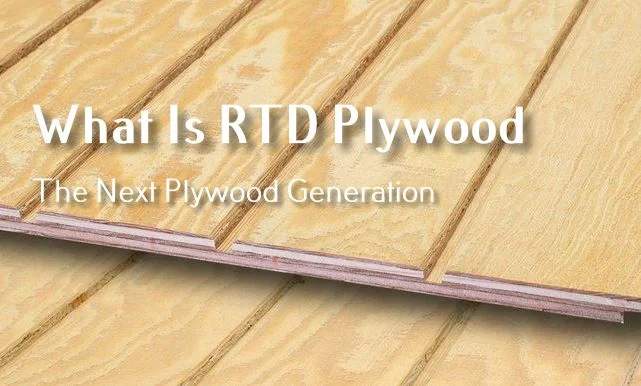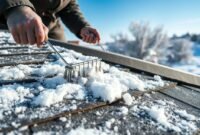Construction pros often struggle with traditional plywood’s flaws. It can get damaged by moisture, doesn’t always perform well, and has weak adhesives. This makes building projects tough and expensive.
RTD plywood is changing the game. It uses special tech to make wood panels that resist moisture better than usual. This means buildings stay strong and last longer, saving money and hassle.

Understanding RTD Plywood Fundamentals
RTD wood products are a big step forward in plywood making. They use advanced technology that makes them different from regular plywood. RTD stands for “Rated Temperature Detector,” which is key to making these panels work better.
Definition and Basic Properties
RTD plywood meets high standards in building and woodworking. Its making process focuses on top-notch temperature control. This leads to:
- Enhanced moisture resistance
- Consistent bonding quality
- Multiple span rating options
- Versatile thickness ranges
The Role of Resistance Temperature Detector
The Resistance Temperature Detector changes plywood making by watching temperature in real time. It makes sure the glue sticks right, which is important. Every two minutes, it makes 30 sheets of plywood, keeping quality high and reducing problems.
Read also: What Size Plywood for Roof and Construction
Core Manufacturing Process
RTD plywood making uses smart temperature control. It watches the glue bonding temperature closely. This is key for making strong wood products. RTD panels have many span ratings, like 12/0 to 48/24, for different building needs.
RTD Plywood Grade Classification System

Choosing the right plywood is easier with the RTD grading system. It helps you pick the best material for your project. This system is detailed and helps both pros and DIY fans.
The grading goes from N to D, with N being the top quality and D the lowest. It looks at the surface, defects, and overall quality. This ensures you get the right plywood for your needs.
Plywood Grade Breakdown
- N Grade (Top Quality): Pristine surface, minimal to no defects
- A Grade: Smooth surface, very few small repairs allowed
- B Grade: Slight imperfections, minor repaired defects permitted
- C Grade: Visible knots and defects up to 1.5 inches
- D Grade (Lowest Quality): Large knots and significant defects up to 2.5 inches
Think about your project’s needs when picking plywood. A-grade is great for furniture and visible areas. Lower grades are better for structural uses where looks don’t matter as much.
Practical Considerations
Each plywood type is suited for different uses. Exterior projects need higher-grade sheets for better moisture resistance. Interior projects might use lower-grade materials.
Higher grades cost more but have a better finish and fewer defects. Your choice should balance your budget with your project’s needs.
What Is RTD Plywood and Its Modern Applications
RTD lumber has changed the construction world with its special features and many uses. It’s a top choice for builders and contractors because it meets many project needs.
RTD plywood is used in many construction areas. It’s a favorite among professionals looking for dependable materials. Its unique qualities make it stand out in different building situations.
Construction Industry Uses
In construction, RTD plywood shines in several ways:
- Roof sheathing with top-notch moisture resistance
- Temporary decking for construction sites
- Structural support for walls and exterior layers
- Protection against environmental elements
Residential Building Applications
Residential construction gets a lot from RTD plywood’s toughness. Builders love its strength and ability to handle heavy loads. It also keeps buildings stable.
- Wall construction
- Roof framing
- Exterior sheathing
- Shed and outdoor structure development
Commercial Project Implementation
Commercial projects use RTD plywood for its strong performance and cost savings. It’s great for supporting heavy loads during construction. This makes it perfect for big projects.
- Temporary structural support
- Construction site flooring
- Scaffolding base materials
- Interim protective layering
Even though RTD plywood is great for temporary fixes, it’s important to switch to permanent materials after the project is done. This ensures the structure stays strong over time.
Key Features of RTD Plywood Construction

RTD plywood is a big step forward in wood veneer products. It’s great for construction pros because of its top-notch structure and dependability.
RTD fiberboard and plywood are the best for tough construction jobs. Here are the main reasons why:
- Advanced Temperature Control: Uses Resistance Temperature Detectors (RTDs) during making
- Superior Dimensional Stability: Keeps edges straight and prevents layers from coming apart
- Exceptional Strength: Made with 4-Ply Southern Yellow Pine (SYP)
- High Fastener Holding Capacity: Keeps the structure strong
Performance metrics show how amazing RTD plywood is:
| Characteristic | Performance |
|---|---|
| Thickness Swell | 6% to 8% |
| Panel Bending Stiffness | 10% Greater than OSB |
| Density | 34-36 pounds per cubic foot |
| Standard Dimensions | 19/32 in x 4 ft x 8 ft |
Made in the USA, RTD plywood is top-notch for roofing, walls, and floors. It’s known for its consistent quality and durability. It’s the go-to choice for construction pros looking for reliable wood products.
RTD Plywood Categories: Exposure 1 and Exterior Panels
When you’re looking for plywood at Home Depot, knowing the RTD plywood types is key. RTD plywood comes in two main types for different building needs.
Plywood grading is more than just looking at it. The two main RTD plywood types – Exposure 1 and Exterior Panels – have special features for different uses.
Exposure 1 Characteristics
Exposure 1 plywood is good for keeping things dry but has its limits. It has:
- Temporary moisture protection during construction
- Fully waterproof bonding
- Not suitable for constant moisture
- Ideal for short-term outdoor projects
Exterior Panel Specifications
Exterior panels, found at Home Depot, are better at handling moisture. They’re made for lasting in tough environments:
- Permanent waterproof protection
- Designed for constant moisture
- Recommended for roofing and outdoor use
- More durable against weather
Performance Comparison
When choosing between Exposure 1 and Exterior panels, think about your project. Both offer moisture protection, but they handle long-term weather differently.
Whether you’re a contractor or a DIYer, RTD plywood is a safe choice. Its advanced making process reduces delamination risks compared to regular plywood.
Moisture Resistance and Durability Features
RTD plywood is a top pick for wood veneer products because of its great moisture resistance. I’ve seen how well it holds up in tough spots. Its special making process makes it strong against high humidity and wet places.
The key features of RTD plywood’s moisture resistance include:
- Advanced water-resistant adhesive bonding
- Reduced risk of swelling or delamination
- Enhanced structural integrity in humid conditions
- Ideal for exterior applications like roofing and wall sheathing
Experts love RTD plywood for its toughness in hard places. It’s made by bonding wood veneer layers with special water-resistant adhesives. This makes it much better at fighting off moisture damage.
Even though RTD plywood is very good at keeping out moisture, it’s not completely waterproof. You’ll need to seal it well and use moisture barriers to keep it working great for a long time. Choosing this top-notch material can save you money in the long run because it needs fewer fixes and swaps than regular plywood.
Key benefits for construction pros include:
- Increased longevity in moisture-rich environments
- Reduced maintenance costs
- Improved structural reliability
- Better performance in exterior applications
When picking RTD plywood, think about the moisture issues your project faces. Its advanced design makes it a great pick for jobs that need both durability and moisture resistance.
Fire Rating and Safety Standards
Fire safety is key for builders and homeowners with RTD wood products. Fire-rated laminated plywood adds a vital layer of protection. It keeps buildings strong during fires.
Fire Retardant Properties
RTD plywood fights fires well. It’s treated to stop flames and lessen damage. There are different fire ratings:
- Class A: Flame spread index of 25 or less
- Class B: Flame spread index between 26-75
- Class C: Flame spread index between 76-200
Safety Certifications and Testing
Testing makes fire-rated plywood reliable. The International Building Code sets rules for smoke and flame resistance:
| Certification Aspect | Requirement |
|---|---|
| Smoke Developed Index | Less than 450 |
| Common Plywood Thicknesses | ½ inch, 5/8 inch, 3/4 inch |
| Standard Sheet Size | 4×8 feet (8-16 feet lengths) |
The treatment process uses special chemicals to fight fires. Quality checks make sure it works well in fires. This ensures top safety for building materials.
Read also: What Is Elastomeric Roof Coating
Conclusion
Exploring plywood manufacturing, I found RTD plywood to be a major step up. It uses advanced technology and performs better than others. This makes it great for both pros and DIY fans.
RTD plywood is leading the way in plywood uses. It’s perfect for both outside and inside projects. Its waterproof design and strong structure are ideal for many tasks.
Though it costs more than regular plywood, the benefits last longer. It doesn’t warp, swell, or rot, saving you money and time. RTD plywood is the future of building materials, being smart, reliable, and lasting.
For your next project, think about using RTD plywood. Its advanced making and wide uses make it a wise choice for quality and durability.




